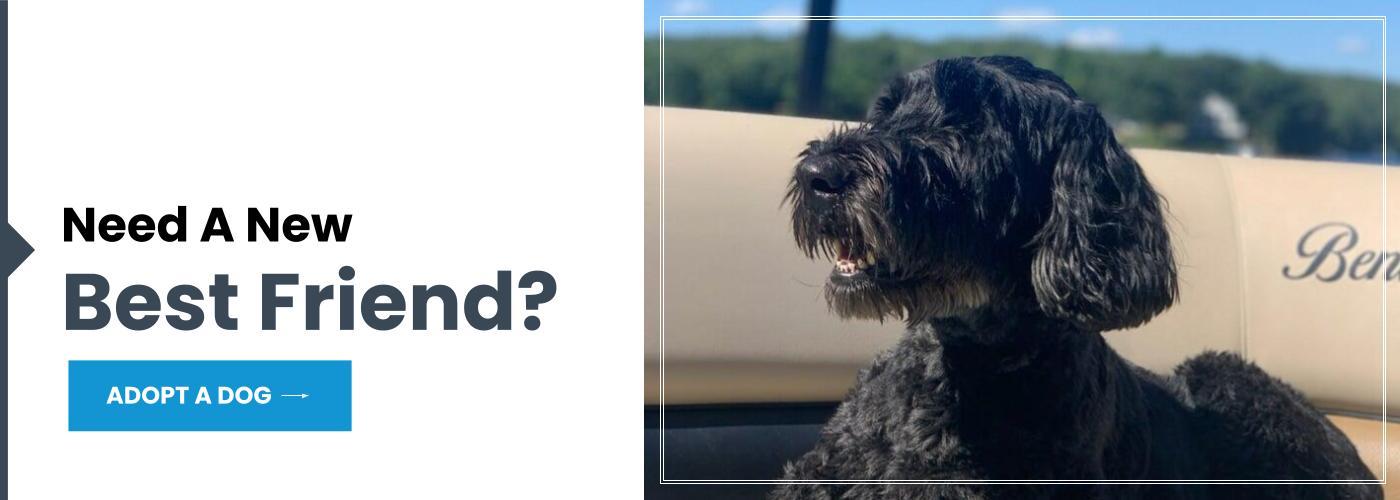Are you considering adopting a Schnauzer? These adorable and loyal dogs make wonderful additions to any family. However, before you start searching for your perfect schnauzer companion, it’s important to understand the different types of schnauzers available for adoption and what to expect when bringing one home.
In this blog post, we’ll cover everything you need to know about finding and caring for your adopted schnauzer. From the various types of schnauzers to their temperament and trainability, we’ll give you all the information you need to make an informed decision. Let’s dive in!
Why Choose a Schnauzer from a Shelter or Rescue?
Adopting a dog from a shelter or rescue organization has countless benefits for both the dog and the adopter. Here are just a few reasons why choosing a schnauzer from a shelter or rescue is a great option:
- You are saving a life: By adopting a dog from a shelter or rescue, you are giving them a second chance at life. Many of these dogs have been abandoned or surrendered by their previous owners and are in desperate need of a new loving home.
- You can find a variety of ages and breeds: Shelters and rescues often have a wide range of schnauzers available for adoption, from puppies to seniors. This gives you the opportunity to find the perfect match for your lifestyle and preferences.
- You can save money: Adopting a schnauzer from a shelter or rescue is much more affordable than purchasing one from a breeder. In addition, many shelters and rescues will provide vaccinations, spaying/neutering, and other necessary medical treatments before the adoption, saving you even more money.
- You are supporting a good cause: By adopting a schnauzer from a shelter or rescue, you are not only helping one dog but also supporting the organization’s efforts to rescue and care for more animals in need.
Types of Schnauzers: Miniature, Standard, and Giant

Before you start your search for a schnauzer for adoption, it’s important to understand the different types of schnauzers available. While they all share similar characteristics, each type has its own unique traits and qualities.
Miniature Schnauzers
The miniature schnauzer is the smallest of the three types, standing at just 12-14 inches tall and weighing between 11-20 pounds. They have a distinctive appearance with their bushy eyebrows, beard, and mustache. Miniature schnauzers are known for their playful and sociable personalities, making them great family pets. They are also highly adaptable and can do well in both apartments and houses.
However, it’s important to note that while miniature schnauzers are small in size, they have high energy levels and require daily exercise and mental stimulation. They are also prone to separation anxiety if left alone for long periods, so they are best suited for families who can spend a lot of time with them.
Standard Schnauzers
The standard schnauzer is the original and oldest of the three types, with a height of 17-20 inches and a weight of 30-45 pounds. They were originally bred as working dogs, specifically for guarding and herding. Today, they make excellent family pets and are known for their intelligence, loyalty, and protective nature.
Standard schnauzers have moderate energy levels and require daily exercise and mental stimulation. They are also highly trainable and excel in various activities such as obedience, agility, and tracking. However, they can be reserved with strangers and may exhibit aggressive behaviors towards other dogs, so early socialization and training are essential.
Giant Schnauzers
As the name suggests, giant schnauzers are the largest of the three types, standing at 23.5-27.5 inches and weighing between 55-80 pounds. They were originally bred as working dogs for tasks such as herding and guarding livestock. Today, they are still used as working dogs but also make great family pets.
Giant schnauzers are known for their noble and confident personalities. They are also highly intelligent and require regular mental and physical stimulation to prevent boredom and destructive behaviors. While they are generally good with children and other pets, proper socialization is necessary to ensure they are well-behaved around others.
Schnauzer Temperament and Trainability

One of the reasons why schnauzers are such popular breeds is because of their wonderful temperaments. They are known to be intelligent, loyal, and highly trainable. However, like all dog breeds, it’s important to understand their temperament in order to provide them with the best care and training.
Intelligence
Schnauzers are ranked as one of the most intelligent dog breeds, making them quick learners and easy to train. This intelligence can sometimes lead to stubbornness, so it’s important to establish yourself as the pack leader early on and use positive reinforcement techniques in training.
Loyalty
Schnauzers are incredibly loyal and devoted to their families. They thrive on attention and affection and will do anything to please their owners. While this makes them great family pets, it also means they can develop separation anxiety if left alone for long periods. It’s important to provide them with plenty of exercise, mental stimulation, and companionship to keep them happy and content.
Sociability
Schnauzers are generally sociable and get along well with children and other pets. However, proper socialization is crucial from a young age to ensure they are comfortable and well-behaved around strangers and other animals. If not properly socialized, they may exhibit aggressive behaviors towards other dogs or become fearful and shy around new people.
Trainability
As mentioned earlier, schnauzers are highly trainable. They have a strong desire to please their owners and respond well to positive reinforcement techniques such as treats, praise, and playtime. However, they can also be stubborn at times, so patience and consistency are key when training a schnauzer.
Caring for Your Adopted Schnauzer: Essential Tips
Bringing home an adopted schnauzer is an exciting time, but it’s important to be prepared for the responsibilities that come with owning a dog. Here are some essential tips for caring for your adopted schnauzer:
Grooming
Schnauzers have a dense, wiry coat that requires regular grooming to keep it healthy and tangle-free. This includes brushing at least once a week and occasional trimming to maintain their distinctive eyebrows, beard, and mustache. In addition, they will need to be bathed every 4-6 weeks and have their nails trimmed regularly.
Exercise
All types of schnauzers require daily exercise to keep them physically and mentally stimulated. This can include walks, runs, playtime in the backyard, or participating in activities such as obedience, agility, or tracking. The amount of exercise needed will depend on your schnauzer’s age, size, and energy levels, but aim for at least 30 minutes to an hour each day.
Nutrition
It’s important to feed your schnauzer a high-quality diet that is appropriate for their age, size, and activity level. Consult with your veterinarian to determine the best food for your schnauzer and follow their recommendations for portion sizes. Avoid feeding your schnauzer table scraps or human food as this can lead to obesity and other health issues.
Health Care
Just like any other dog, schnauzers are prone to certain health issues such as hip dysplasia, eye problems, and skin conditions. It’s important to take your schnauzer to the veterinarian regularly for check-ups and ensure they receive all necessary vaccinations and treatments. By staying on top of your schnauzer’s health care, you can catch any potential issues early and provide them with the best possible care.
Mental Stimulation
As mentioned earlier, schnauzers are highly intelligent dogs that require mental stimulation to prevent boredom and destructive behaviors. This can include puzzle toys, training sessions, or simply playing games like fetch or hide-and-seek. Keeping your schnauzer mentally stimulated will not only keep them happy but also strengthen your bond with them.
Resources for Finding Schnauzers for Adoption
Now that you have all the information you need about adopting and caring for a schnauzer, it’s time to start your search for your perfect match. Here are some resources to help you find schnauzers for adoption:
- Local shelters and rescue organizations: A quick Google search can help you find shelters and rescues in your area that may have schnauzers available for adoption.
- Petfinder.com: This website allows you to search for adoptable pets in your area and filter by breed, age, and other preferences.
- Schnauzer-specific rescues: There are many rescues dedicated to saving and rehoming schnauzers. A simple online search can help you find one near you.
- Social media: Many shelters and rescues post updates and photos of their adoptable pets on social media platforms such as Facebook and Instagram. Follow these pages to stay updated on available schnauzers.
Conclusion
Adopting a schnauzer is a wonderful decision that can bring endless joy and love to your life. By understanding the different types of schnauzers, their temperament and trainability, and how to care for them properly, you can make an informed decision and provide your adopted schnauzer with the best possible home.
Remember, adopting a dog is a commitment that requires time, effort, and resources. But in return, you will receive unconditional love and loyalty from your furry companion. So if you’re ready to add a new member to your family, consider adopting a schnauzer and give them a second chance at a happy life.
